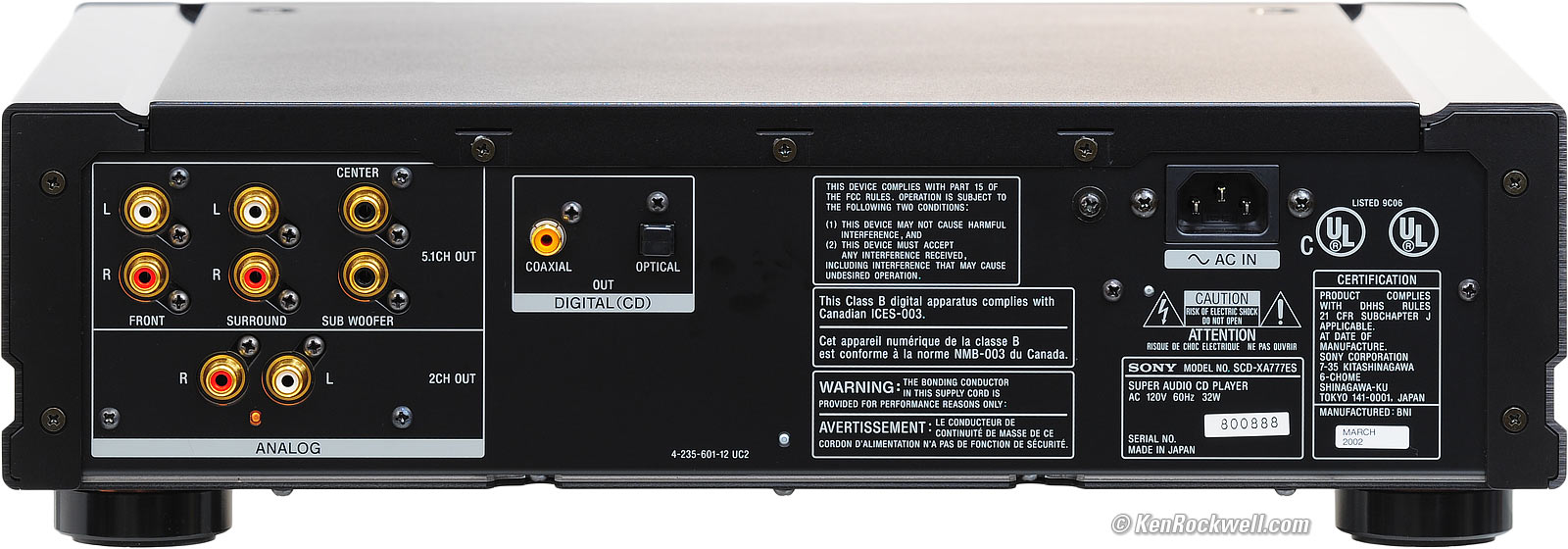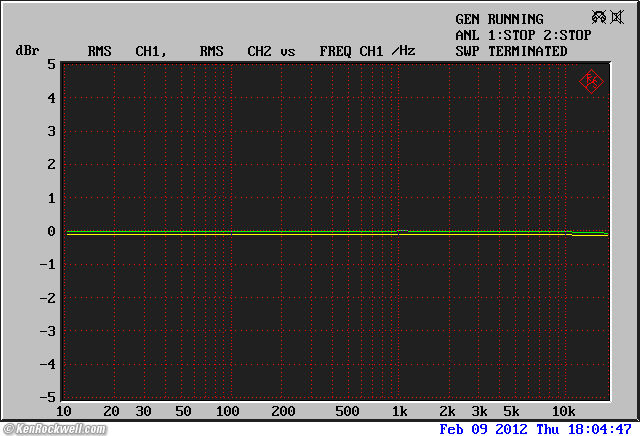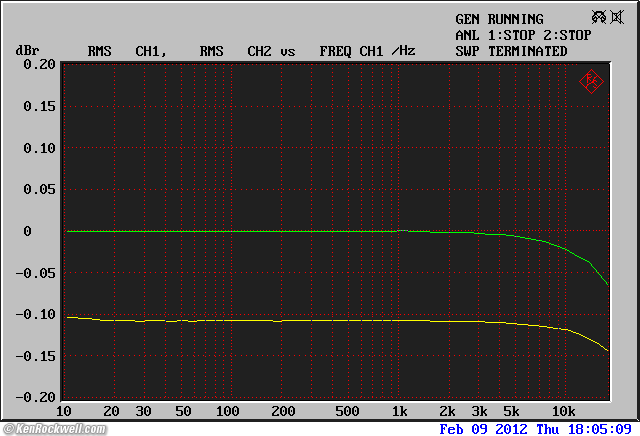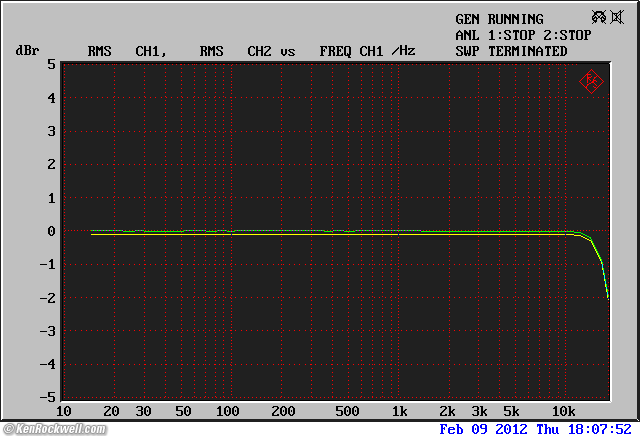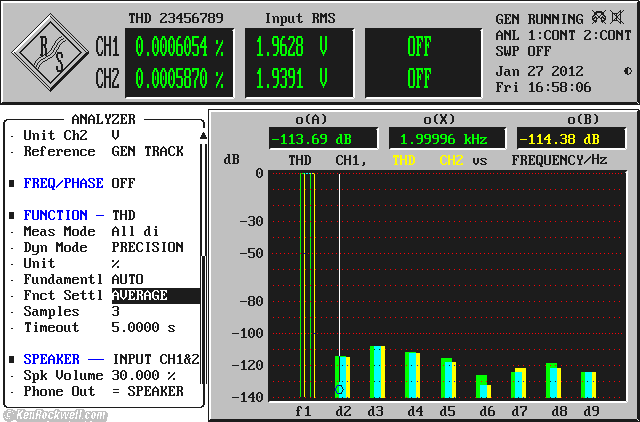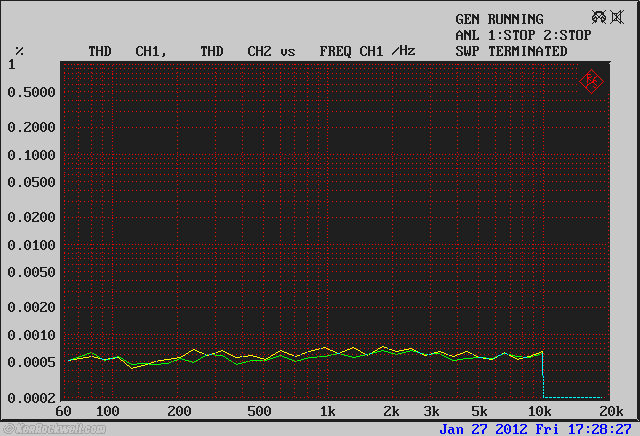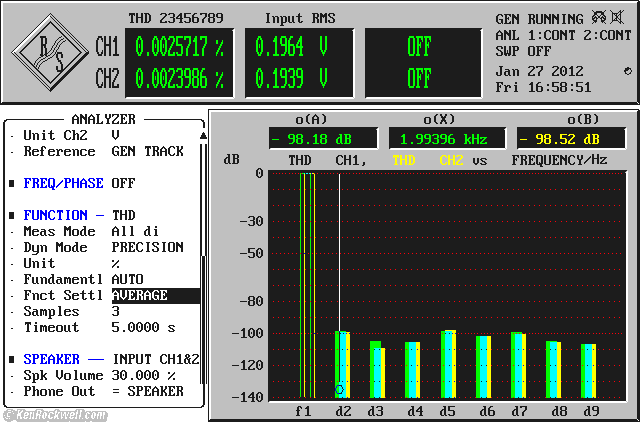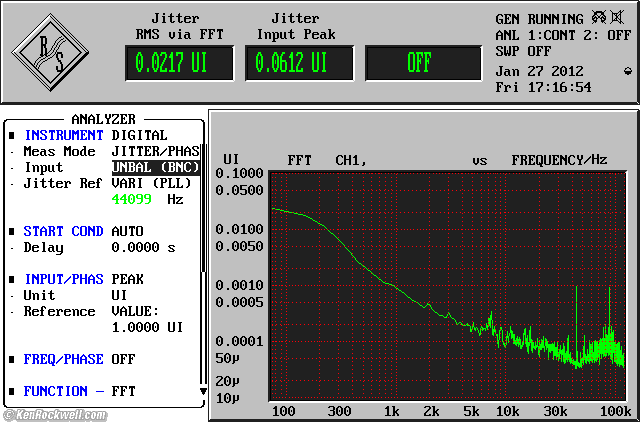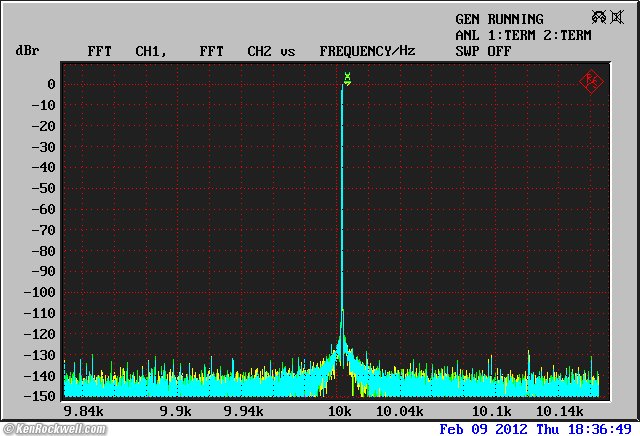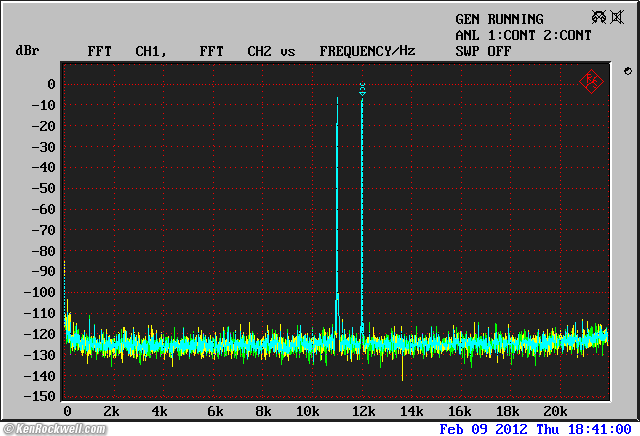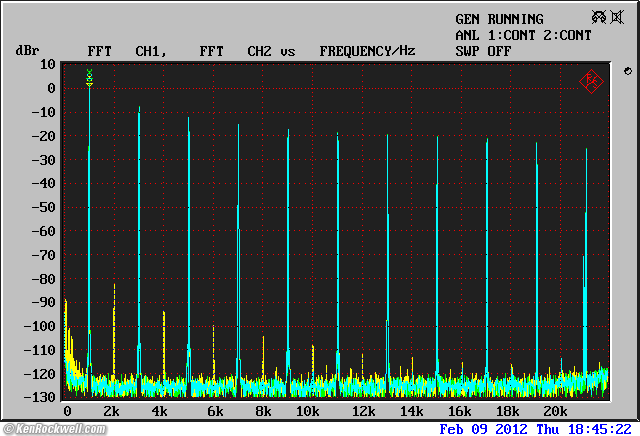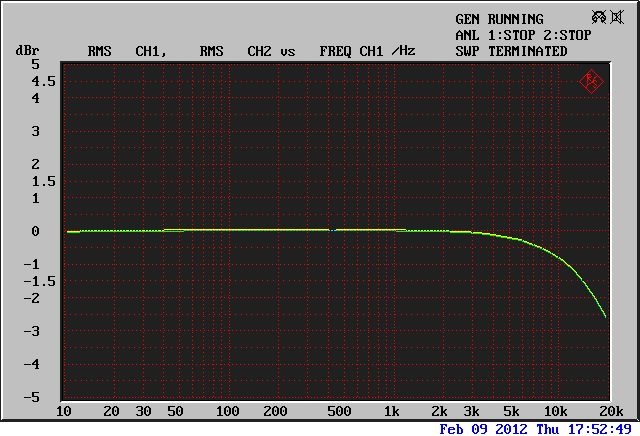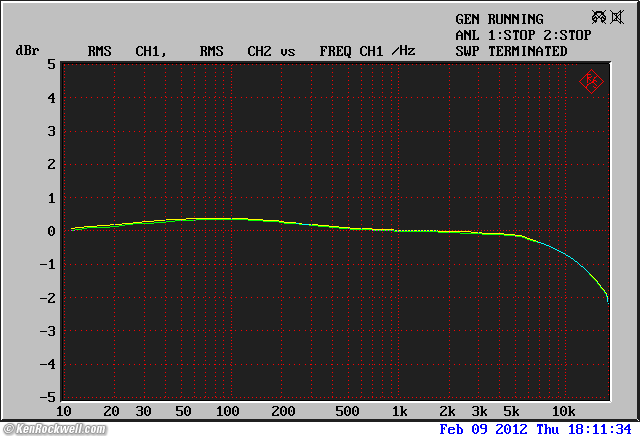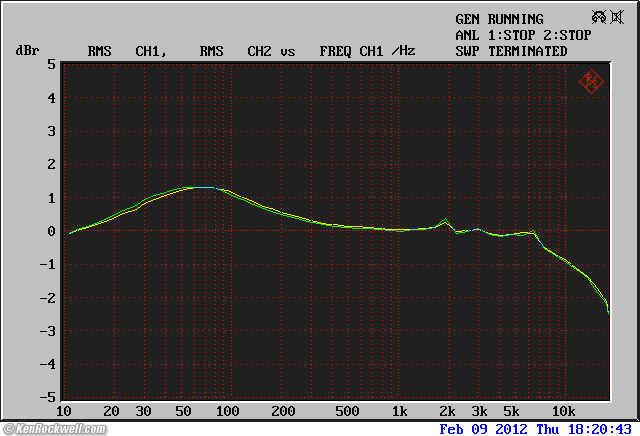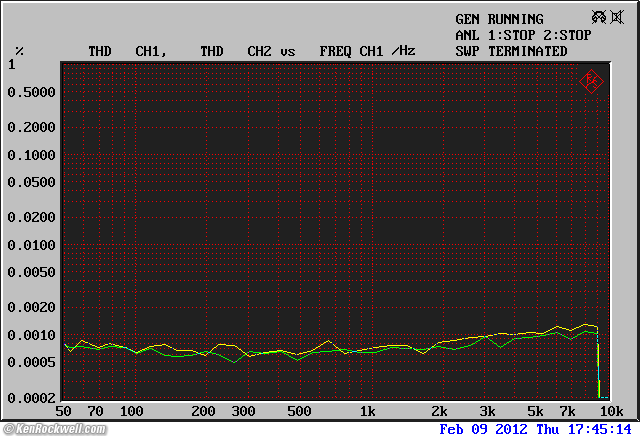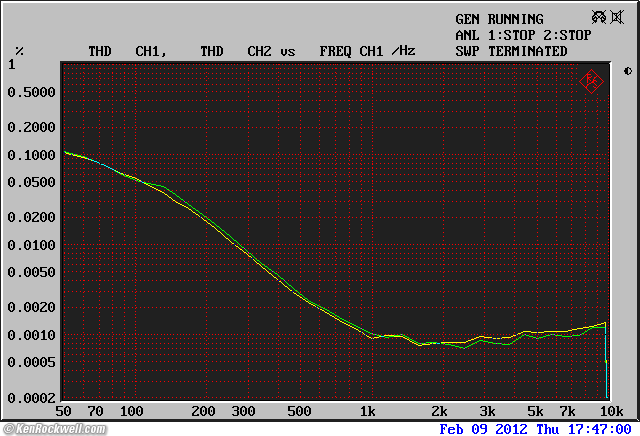Home Donate New Search Gallery Reviews How-To Books Links Workshops About Contact
Sony SCD-XA777ES
World's Greatest SACD & CD Player (2001-2004)
Intro Specs Performance Measurements Usage Recommendations More
Sony SCD-XA777ES. larger.
Sony SCD-XA777ES (35.3 pounds/16kg without cord, about $950 used). larger. This free website's biggest source of support is when you use these links, especially this link directly to them at eBay (see How to Win at eBay), when you get anything, regardless of the country in which you live. Thanks! Ken.
March 2012 All Reviews > Audio Reviews > Sony Reviews
Introduction top
Intro Specs Performance Measurements Usage Recommendations More
|
I buy only from these approved sources. I can't vouch for ads below. |
The Sony SCD-XA777ES was Sony's $3,000 flagship 36-pound (16 kg) single CD and SACD player of 2001-2004. Sony fielded this player mostly as a "halo" product and to promote the SACD format. It plays both CDs and SACDs.
As the "777" model number tells us, Sony planned for this to be their greatest player ever.
It has both RCA coaxial and TOSLINK optical digital outputs (for CD only), and has both stereo analog as well as a dedicated six-channel analog output for 5.1 multichannel SACDs.
Better than modern players with only HDMI multichannel outputs for ratty A/V receivers, this Sony beauty has six discrete analog outputs from six premium DACs to feed to six channels of premium amplification. (one of these six is the "0.1" mono subwoofer output.)
Since it has six ultra-high-quality DACs for the six channel outputs, in stereo mode, it sums three DACs together for each stereo channel, lowering DAC noise and random distortion and artifacts by 10 dB compared to the performance of just one of them — and each one is as good as Sony knew how to do.
This player measures and sounds wonderful.
Much better than the jitter problems present with connecting any external DAC, this player, as all one-box players, locks its DACs directly to the crystal-controlled internal master clock and controls the platter speed as part of a servo loop controlled by the state of fill of the FIFO (first-in, first-out) read buffers, so jitter is a non-issue. Jitter is only a significant issue for playback if attempting to send a digital signal over an external cable between boxes where the platter speed isn't controlled by the DAC clock, and the DAC has to reconstruct a clock signal from the data stream instead. As you can see at the 10 kHz FFT, it's cleaner than high-end external DACs today.
Specifications top
Intro Specs Performance Measurements Usage Recommendations More
Outputs
Analog
2-channel stereo and 6-channel (5.1) outputs.
2 V RMS full-scale into at least 10kΩ.
Headphones: 10 mW into 32Ω (565 mV).
Digital
Optical TOSLINK: -18 dBm at 660nm (CD only).
Coaxial: 500mV peak-to-peak into 75Ω (CD only).
Frequency Range
SACD
2 ~ 100,000 Hz, no conditions specified, making these numbers a meaningless waste of ink.
CD
2 ~ 20,000 Hz, no conditions specified, making these numbers a meaningless waste of ink.
Frequency Response
SACD
2 ~ 50,000 Hz @ -3 dB.
CD
2 ~ 20,000 Hz ± 0.5 dB, EIAJ.
Dynamic Range
SACD
At least 108 dB.
CD
More than 99 dB.
THD
SACD
Less than 0.0018% (-95 dB).
CD
Less than 0.002% (-94 dB), EIAJ.
LASERs
SACD
5.47 µW.
650 nm.
CD
780 nm.
Power
120 VAC, 60 cps.
32 to 38 watts rated power consumption.
Measured power consumption at 120 VAC:
Off: 0 watts, a true disconnect from the power line.
Idle (motor not spinning): 17 watts.
Playing: 19 watts.
Playing and driving 600Ω headphones: 20 watts.
Size, including projections
430 × 130 × 380 millimeters, WHD.
17 × 5 1/8 × 15 inches, WHD.
Weight
35.3 pounds (16 kg or 565 oz.), rated.
Quality
Made in Japan.
Part Numbers
CD Mechanism
CDM19JB-DVBU4B.
CDM19JN-DVBU4B.
Base Unit
DVBU4B.
Optical Pick-up
KHM-230AAA.
Fluff
Multi-Channel Super Audio CD Playback Capability.
CD/CD-R/CD-RW Playback Capability.
Tri-Powered Super Audio D/A Converter System.
Multi-Channel Direct Stream DigitalTM Decoder.
Multi-Channel Management System.
Discrete Laser/Optical Pick Up System with Dual Lasers.
Direct Digital Synch D/A Clock System.
Direct Disc Selection plus Track Access via Jog Dial Control.
32 Step Programming.
All Disc/All Track Repeat Functions via Remote (only).
SACD Text/CD Text Capability.
Fixed Line Output.
Unbalanced Audio Output.
Optical and Coaxial Digital Outputs for CD Selection.
6 Multi-Channel Analog Output, plus Stereo Line Level Output for CD and SACD.
Control A-1 II for Connection to Sony Components.
Frame and Beam Chassis Construction.
Dual R-Core Power Transformers.
Triple Audio Boards.
Gold Plated Line Outputs.
Aluminum Front Panel.
Off-Center Insulator Feet.
Dual User Assembly Optimized for SACD/CD Playback.
Included
SCD-XA777ES player.
Three pairs of stereo (red & white) RCA cords.
Two mono (black) RCA cords.
RM-SX700 Remote Commander with two Sony AA cells.
AC power cord, 8 feet (2.5m).
Manual.
Performance top
Intro Specs Performance Measurements Usage Recommendations More
Sound
Reproduction this fine can really only be appreciated with the highest-definition transducers, like the Stax Omega II headphones. Used with the Stax and a good recording, close your eyes and you can see the performers, see them move around, see them turn pages, change fingerings, sing along, and creek in their chairs.
With SACDs, the XA-777ES' sound is also smooth and detailed. Even my original 1979 Cleveland Winds digital recording as reissued on SACD sounds stunningly smooth and natural, with none of the digital glare detractors thought it had when originally released on LP and CD. That first digital recording scared the pants off most of us when we heard it the first time for its dynamics. Today, the dynamics and virtuoso performance is there, and so is the naturalness.
Headphone Output
The internal headphone amplifier is much better for good, high-impedance headphones than the weak output of an iPod.
It's almost loud enough with a 600Ω Beyer DT880 even for classical recordings, and more than enough for popular recordings.
The level control sounds like it has a linear taper, meaning that the level doesn't get much louder past 12 o'clock. The two channels track very well at any setting you'll ever actually use.
Mechanics
The XA777ES is a 35+ pound all-metal beast. The headphone knob is plastic (and lacks the LED of the Sony CDP-X303ES), but the other buttons, the AMS knob and everything else are all metal. I'll bet you it has a lead weight inside; electronics really don't need to weigh this much, so Japanese makers often load weights under the guise of "stabilizers" into the case to pad it up. In any case, it feels good!
Ergonomics
Track selection is fast and simple with the AMS knob. Pop a disc in the tray, spin the AMS knob, and the player is smart enough to load the disc and start playing.
There is no forward and backward scan button; you only can do that from the remote. Don't fear if your SCD-XA777ES comes with no remote; any Sony CD player remote works fine for all these playback controls.
Likewise, the only way to set the REPEAT options is with a remote control.
The buttons are clear and simple, but I'd still like them even bigger and bolder.
Likewise, the PLAY and PAUSE LEDs are just small dots above each button. I'd love it if they backlit the symbol on each button.
While the drawer is wonderfully smooth, solid and quiet, the spindle motor is slightly audible if you're only a couple of feet away.
Measurements (CD) top
Intro Specs Performance Measurements Usage Recommendations More
All these measurements are made in 2012 on a player that was built in 2002, on the CD section only, playing the CBS CD-1 engineering test disc stamped in 1983.
The traces from the Rohde & Schwarz UPL laboratory analyzer are color coded for the Left Channel and for the Right Channel. When they don't lie on top of each other, it's due to channel imbalance.
Output Level, CD at 0 dBFS
Output Voltage
1.9649V RMS left, 1.9403V RMS right, 200 kΩ load.
This is 0.21 dB shy of 2 V.
Output Source Impedance
110.2 Ω at 1 kHz. Same at 50 Hz and 20,000 Hz.
Headphone Jack
About 3.5V RMS. See Headphone Amplifier Measurements.
Noise
-105 dBV A-weighted, playing digital zeros.
Since 0 dBFS is +6 dBV, this is a 111 dB signal to noise ratio, the highest I've measured for 16-bit playback.
Frequency Response
Line output at 0 dBFS, 200kΩ load. (CBS CD-1 track 11, R&S UPL.)
That's pretty flat. Let's greatly increase the vertical scale and see what happens:
Line output at 0 dBFS, 200 kΩ load. (CBS CD-1 track 11, R&S UPL.)
+0, - 0.07 dB is pretty flat. The biggest thing to note is that the channels are imbalanced by 0.107 dB, that is, the right channel is 0.107 dB lower than the left.
The -0.07 dB at 20 kHz response is quite likely due to the interconnect cable's capacitance. The SCD-X777ES' source impedance is 110 Ω, so only 600 pF would cause the same loss at 20 kHz.
Let's see what happens driving a 600 Ω resistor:
Line output at 0 dBFS, 600 Ω load. (CBS CD-1 track 11, R&S UPL.)
Aha! A half dB drop at 10 Hz. Obviously there is a coupling capacitor in there, but no big deal, the SCD-XA77ES isn't supposed to be driving 600 Ω loads from its -10 dBu RCA outputs.
And now let's see what the "Digital Filter" option does:
"Digital Filter: Option" response, line output at 0 dBFS, 200 kΩ load. (CBS CD-1 track 11, R&S UPL.)
Setting the "Digital Filter" to "Option" drops the response 2 dB at 20 kHz. I doubt anyone will ever hear this.
THD: 0.0006% (-104 dB)
Harmonic spectrum, line output, undithered 1kHz at 0 dBFS. (CBS CD-1 track 1, R&S UPL.)
Sony SCD-XA777ES THD, line output, undithered sine wave at 0 dBFS, 22kHz bandwidth. (CBS CD-1 track 11, R&S UPL.)
Harmonic spectrum, line output, undithered 1kHz sine wave at -20 dBFS. (CBS CD-1 track 18 index 6, R&S UPL.)
Jitter Output Spectra
As we can see (OK, as any engineer can see), jitter is well below audible limits. Even if you use a poorly-designed external DAC with no jitter rejection for some reason it ought to work great.
Sony SCD-XA777ES digital output jitter, Coax output, 3-foot cable. (roll-over to compare to optical.)
This is close to the limits of the analyzer, except for the spikes at 44.1 and 88.2 kHz, which are still tiny at 0.001 of a Unit Interval.
Sony SCD-XA777ES digital output jitter, TOSLINK output, 12-foot optical cable.
This is at the limits of the analyzer, except again for the minor spikes.
Let's see a zoomed FFT of a 10 kHz sine wave. Let's see what sort of spurs surround the carrier, which show us internal jitter:
Zoomed spectrum of 10 kHz 0 dBFS sine wave. (CBS CD-1 track 9, R&S UPL.)
This is very good; I haven't seen any external DAC be able to beat this. The skirt doesn't start to spread until -120 dB!
IMD spectrum at 11 kHz and 12 kHz 1:1. (CBS CD-1 track 13, index 2, R&S UPL.)
1,002.27 Hz 0 dBFS square wave. (CBS CD-1 track 16, R&S UPL.)
This is very clean, note how the strongest even-order component is only -81dB, and only on the right channel (in yellow).
Let's select the optional digital filter and see what happens:
1,002.27 Hz 0 dBFS square wave. (CBS CD-1 track 16, R&S UPL.)
As expected, the 21 kHz component dropped a few dBs.
Source Impedance
55.6 Ω at 1 kHz. Same at 50 Hz and 20,000 Hz.
Maximum Output Levels at maximum gain, 0 dBFS
200kΩ load: 3.818V left, 3.755V right @ 0.0004% THD.
600 Ω load: 3.495V, 3.438V @ 0.0005% THD.
300 Ω load: 3.222V, 3.171V @ 0.001% THD.
37.5 Ω load: 0.715V, 0.718V @ 0.1% THD (gain about 2 o'clock before clipping).
Level Control Channel Tracking
Right channel level versus left channel, vs. Headphone level setting. (positive means image moves to right. R&S UPL.)
Frequency Response
Headphone output driving 600 Ω resistor. (CBS CD-1, track 11. R&S UPL.)
Headphone output driving Beyer DT 880 (600 Ω). (CBS CD-1, track 11. R&S UPL.)
Headphone output driving Ultrasone Edition 8 at 100 mV. (CBS CD-1, track 11. R&S UPL.)
Obviously, the 55 Ω source impedance is letting the Edition 8's impedance hump boost the bass a bit.
THD
Headphone output THD driving a 600 Ω resistor. (CBS CD-1, track 11. R&S UPL.)
THD, Headphone output driving Beyer DT 880 (600 Ω) at 1V RMS. (CBS CD-1, track 11. R&S UPL.)
THD, Headphone output driving Ultrasone Edition 8 at 100 mV. (CBS CD-1, track 11. R&S UPL.)
Usage top
Intro Specs Performance Measurements Usage Recommendations More
Power
The Sony SCD-XA777ES has a standard HP power connector to which you need to attach the power cord of your choice. The US model seen here comes with a standard generous Sony-gray 8-foot (2.5m) power cord.
Cautions
The manual cautions that SACD output is loaded with strong ultrasonic noise, so don't crank the levels during silence or you could fry your tweeters silently.
Sony says don't try to play discs with stickers.
Analog Outputs
Oddly only the connectors for the stereo output, or the connectors for the multichannel outputs, work at any one time.
Sony does this to emphasize the fact that they use all six DACs in parallel to create the stereo output, however this also means that one cannot get stereo output from the front left and front right connectors; it only comes from the dedicated stereo connectors.
This is great if you want the stereo output to connect to one place and the multichannel output to connect someplace else (as on a Sony receiver), but also means that you can't use the same outputs for both stereo and multichannel if that's how you setup your system.
Since the internal headphone amplifier is fed from the stereo output pair, the headphones won't work during multichannel output.
The only advantage for this is if you're wasting this great player with an A/V receiver, in which case by connecting the different outputs separately lets the receiver know what you're doing as you select each one: have stereo play as pure stereo, and maybe have your receiver screw with the 5.1 to model it to your speaker field.
Honestly, though, you could plumb the stereo outputs to your dedicated stereo rig, and send the multichannel outputs to your multichannel setup, keeping the two separate. There is no remote control of output level as there is on the Sony CDP-X303ES.
Digital Outputs
It's silly to use an analog masterpiece like this with an external DAC, but if you must, be sure to activate the digital outputs with the MENU button and the AMS knob.
If you don't the TOSLINK LED remains lit dimly, just enough to confuse folks into into thinking that the digital outputs are active.
When you do activate the digital outputs, the TOSLINK LED is very bright.
Recommendations top
Intro Specs Performance Measurements Usage Recommendations More
For about $950 used, the Sony SCD-XA777ES is a spectacular chunk of audio playback hardware and arguably the best CD and SACD player ever made. Enjoy the analog outputs for a jitter-free listening experience, especially if you're a 5.1 fan.
If you've found my research helpful, this free website's biggest source of support is when you use these links, especially this link directly to them at eBay (see How to Win at eBay), when you get anything, regardless of the country in which you live. Thanks! Ken.
More top
Intro Specs Performance Measurements Usage Recommendations More
Sony's SCD-XA777ES owner's manual
Sony's SCD-XA777ES dimensional diagram
Sony's SCD-XA777ES support page
Gramophone's review from June 2003.
Stereophile's review from 2002.
Crutchfield's original page on it.
Help me help you top
I support my growing family through this website, as crazy as it might seem.
If you find this page as helpful as a book you might have had to buy or a workshop you may have had to take, feel free to help me continue helping everyone.
If you've gotten your gear through one of my links or helped otherwise, you're family. It's great people like you who allow me to keep adding to this site full-time. Thanks!
If you haven't helped yet, please do, and consider helping me with a gift of $5.00.
As this page is copyrighted and formally registered, it is unlawful to make copies, especially in the form of printouts for personal use. If you wish to make a printout for personal use, you are granted one-time permission only if you PayPal me $5.00 per printout or part thereof. Thank you!
Thanks for reading!
Mr. & Mrs. Ken Rockwell, Ryan and Katie.
Home Donate New Search Gallery Reviews How-To Books Links Workshops About Contact

